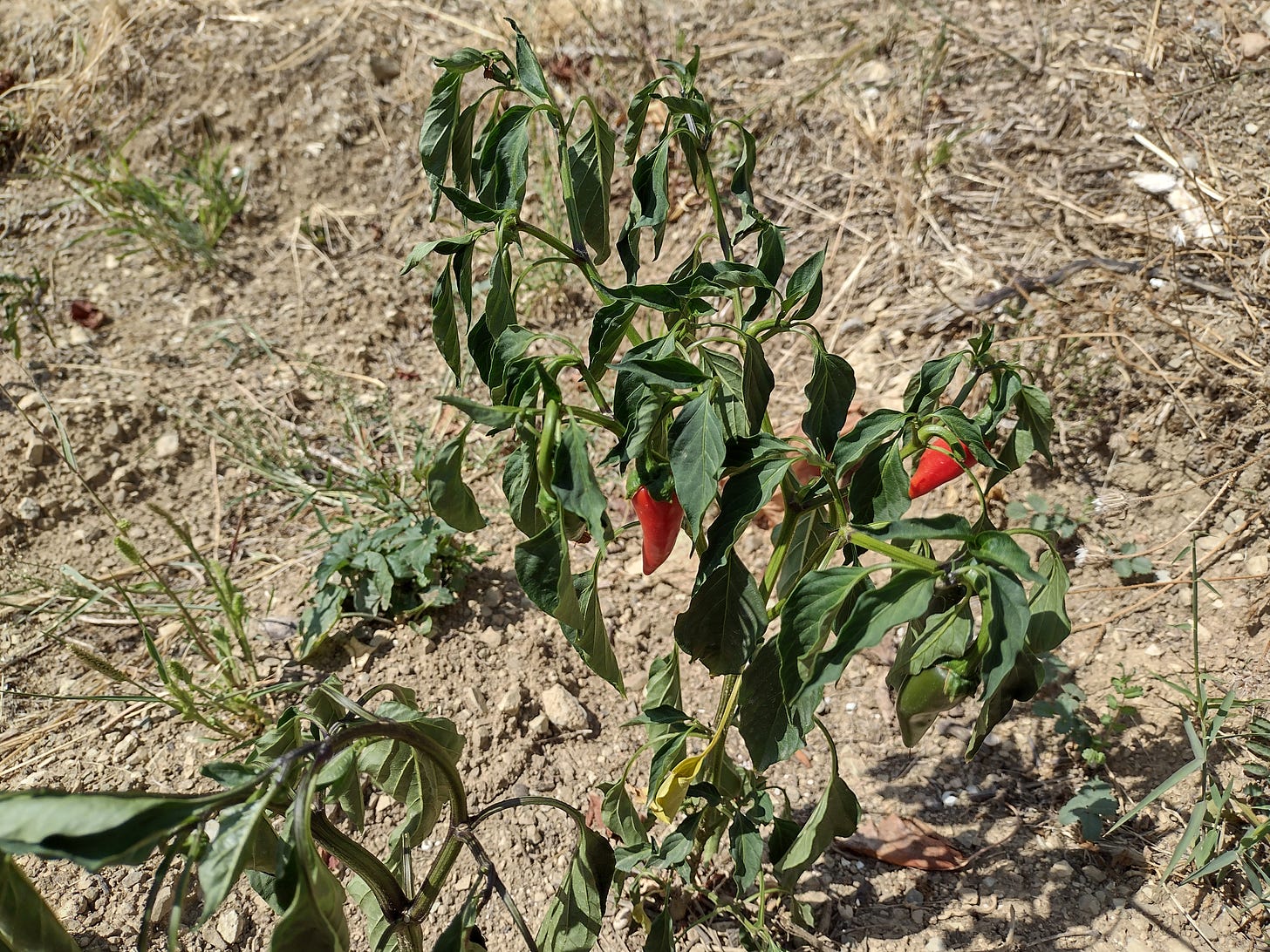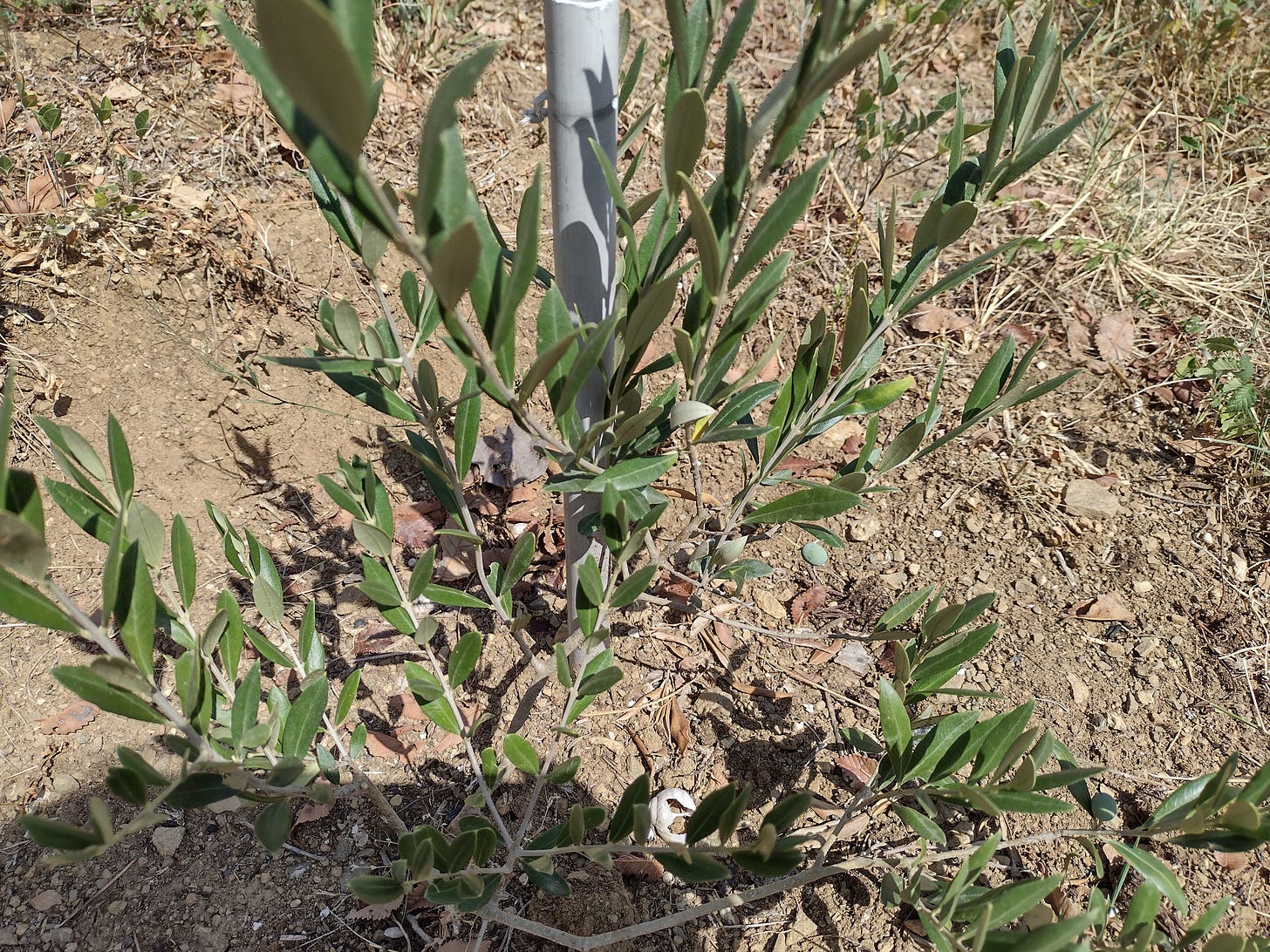An annoying phrase in corporate speak, which means “We screwed up but want to be positive about it”, “lessons learned” can be used with pretty much the same meaning in gardening, too.
This year was rich in lessons that we learned the hard way because sometimes there is no other way. It’s good to learn things the hard way, too, because those lessons stick.
#1 Do not take expert advice as Scripture.
The gardening book said we must plant our pepper seeds in February. Agri websites said we must plant out pepper seed in February.
We took it to heart and planted the pepper seeds in February, which was cold, wet, and generally unpleasant. Result: sweet red peppers indistinguishable in size from the chilis.
#2 Do not be stingy with the fertiliser.
The Book and websites give fertiliser doses on a per-sq-m basis. Our beds are not square metres and we couldn’t be bothered to do any calculations, so we played it by ear, or rather eye, trying to not overfertilise.
So instead we ended up underfertilising. Result: sweet red peppers indistinguishable in size from the chilis. Those chilis are quite something. They made it to full size.
#3 Do not underestimate pest invasions.
“Oh, look how cute these little bugs are,” Cat said when we saw the first few pairs of harlequin bugs mating on the broccoli.
A month later, there were hundreds of them and the broccoli was dying. For next year, we’re being pro-active and pre-emptive.
#4 Watering guidelines are just that.
Tomatoes don’t need watering every day, The Book and websites said. So we didn’t water every day, afraid we might end up drowning them. Result: smaller fruit that we could’ve had.
You’d think this one would be obvious but, no, we had to go by the literal book instead of drawing on years of memories of seeing people water their tomatoes every single evening.
#5 “Likes sunny places” does not mean “Likes sweltering July heat”.
Most of the veggies we grew this year are described as species that like well lit, sunny places. We bought it and planted raspberries and blackberries in sunny places. They did well until July hit. Then they died.
Note for next year: Plant some more trees in the central part of the garden, so future crops have some shade even those that “like sunny places”. We’re planning a visit to a nearby nursery next month.
#6 Consistency matters.
With Cris and Irina raised in the good, old and gold “Waste not, want not” way, we made sure to take advantage of all natural help available.
Garden soup from the lush spring weeds, ground egg shells, compost, you name it, we used it… only not really regularly. And it showed.
On the plus side
#7 Labels lie.
Three years ago, we bought an olive sapling from a supermarket. The label said it must be taken inside during the winter because it would freeze in sub-zero temperatures.
We put it in a temporary container, plopped it in the garden until such time as we bought a pot suitable for it… and left for Sofia as the new school year began.
The olive was subjected to rain, snow, and sub-zero temperatures. And it survived. last year, we planted it in the garden. This year, it flowered. And it bore fruit. It’s about 20 cm high but it bore fruit.
Moral of this year’s gardening season: You will fail and that’s okay. Because next time you’ll know better.



I think gardens are a bit like children, Irina. Each one is different ... temperment / soil, intelligence / sunlight ... and both thrive under a careful, watchful eye. Perhaps there's no such thing as too much love / water?